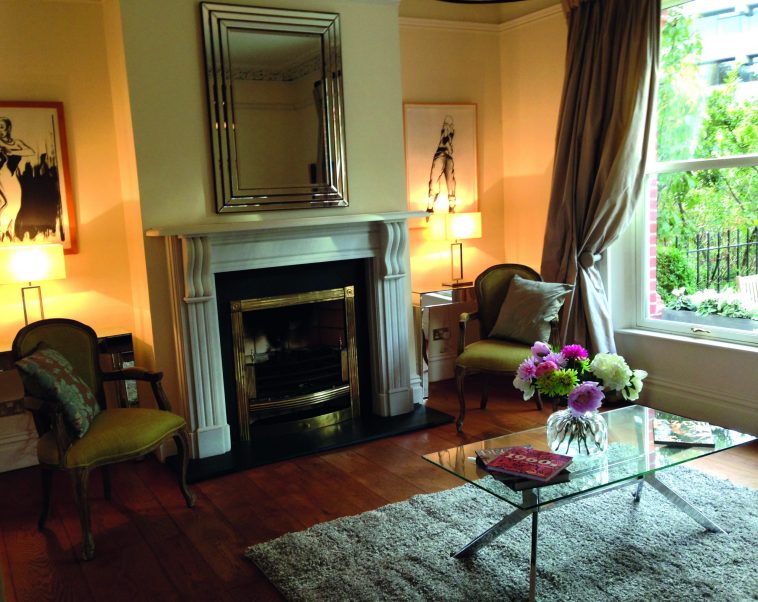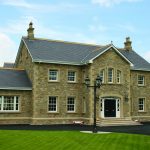Presenting your home to its full potential will help you achieve a quick and cost-effective sale. After all, you never get a second chance to make a first impression!
Home staging is a marketing term that describes the presentation of a property for sale using a design style that will appeal to the widest buying audience; empty rooms are filled and dated rooms made fashionable to show a property to its best advantage and answer visual or spatial questions that buyers may have when viewing.
In the United States, statistics have shown that a staged property can sell up to 70% faster (RESA, Real Estate Staging Association) and for up to 10% more than its un-staged counterparts (2014 HSR Home Staging Statistics). With proven benefits, home staging is increasing in popularity here too. As with show houses in new developments, a successfully staged property will reflect the desired lifestyle of potential buyers, enabling them to connect with a property and envisage living there. So, when it comes to selling property, the bottom line is: it pays to stage.
It doesn’t have to cost a fortune and you don’t necessarily have to call in the experts.
However, structural repairs can be expensive and send prospective buyers running for the hills. It is wise therefore to start by engaging a building surveyor to provide an inspection report that will identify any areas in the house needing attention.
Profiling
Before presenting your house for sale, it is important to consult your agents about the type of buyer your home is likely to attract: first time buyer, commuter couple, empty nester, or silver divorcée; their expertise will help sell your house and match buyer demographic with décor.
Buyers are keen to purchase the best property their budget allows; ‘best’ meaning one that is suited to their personal requirements. Apart from the obvious factors that will influence the decision, such as location, price and size, buyers are also looking for a lifestyle.
A property that is stylishly staged will stand out from otherwise similar ones and will provide attractive photographs for marketing purposes, which is all important when you consider:
- A property search starts with the internet and can end there too; potential buyers will not book viewings unless they like the photos online.
- The majority of potential purchasers cannot visualise a property’s potential.
- Buyers need to be able to imagine themselves in a home before making an offer.
- People buy with their emotions and need to ‘connect’ with a property before they will purchase.
Generally, the longer we live in our homes the less we see them so try and pretend to be a stranger in your own house for an afternoon to spot the potential issues. Prospective buyers can be distracted by clutter, cleanliness, colour, lighting, furniture, odours, pet hair, incomplete repairs – the list goes on. The house will be referred to by its distinguishing features when it’s discussed, and you don’t want them to be negative.
While vendors can be reluctant to invest in the home they are about to leave, a few simple improvements can make a huge difference. You might be surprised by what some small repairs, a good de-clutter followed by a clean and a lick of paint can achieve!
Kerb appeal
Never underestimate the value of a well-presented exterior. The house with the ‘white picket fence and climbing rose’ comes to mind; this is the house that everybody admires and by which travel directions are given.
While clichéd, this example highlights how important property presentation is when you consider that potential buyers (having short listed your property from the internet) will often do a quick drive-by and decide on the spot whether your house is worth viewing or not!
In order to maximise kerb appeal it is important that the grass is cut, the flower beds weeded, loose paving is fixed, the door-bell works, the windows are clean, the garden tap doesn’t drip and there are fish in the fish pond!
Indeed, the list of repairs and ‘to dos’ can be endless but are essential when you consider it takes buyers no more than eight seconds to decide whether they like a house (NAR, National Association of Realtors) and a few of these are spent waiting at the door.
Front door or portal to a sale?
A defining feature, and one of the first things that potential buyers will see when they arrive at your home is your front door. Bright and beautiful or subtle and sophisticated a front door has a big impact on buyers’ first impressions and if not in good repair it sends out all the wrong signals.
A fresh lick of paint can totally transform the look of a home. Pick a colour: cherry red, black, navy, washed out grey, green or blue ensuring that it best suits the style and character of the property.
Colour is very much a personal choice and can reveal a lot about your personality, or so the psychologists say. Currently the rage is for muted colours and many paint companies have ‘historic’ collections that will match the original paint colours used on period properties.
Be sure to have door furniture gleaming; if it’s worn or dull looking consider replacing it and remember to invest in quality (people will be able to tell by the feel). Choose door knockers and letterboxes in keeping with the style of your property: brass will suit a period home and for a contemporary look opt for chrome or brushed aluminum. House numerals should be well positioned and easy to read.
To make a good impression, plants surrounding the door can be almost as important as the door itself. A climbing plant or creeper always adds allure but dead leaves still on the plant must be tended to! Roses and jasmine have universal appeal and clipped box or bay to either side of a front door make for a tidy composition.
As for window boxes, these miniature gardens can truly transform a property; they can be planted in any season to add texture, colour, interest and charm.
Create an outdoor living space
Few things have more ‘lifestyle’ appeal than an outdoor living area, where potential buyers can picture themselves sipping a glass of wine after work, having friends around for a barbeque or simply sitting on a bench with a book.
Making the most of any outdoor space, be it large or small, is therefore a good investment. Whether you are setting the scene by providing table and chairs for alfresco entertaining on the terrace or creating a ‘cosy nook’ in a tiny garden with a bench or bistro table for two, you will be increasing the ‘living’ space of your home while sparking the imaginations of potential purchasers.
Equally with apartments, even if your balcony is the size of a postage stamp, it is an extension of your living space and should be included in the staging of your property. Dress it up with a café table and chairs and let buyers imagine themselves reading the paper and having breakfast outdoors.
Declutter
The Holy Grail to a spacious home and a minimalist lifestyle! Clutter is distracting and prevents potential buyers from picturing the property as their home. In addition, it makes rooms feel smaller and creates the impression there is not enough storage space.
Personal paraphernalia such as photographs, memorabilia, children’s drawings, bathroom toiletries, trophies and other extraneous items, from excess furniture to fridge magnets, should be banished during house visits (stashed away in a box, not piled up high in the spare room!).
The spare room
Make the most of the space you have by using extra rooms wisely. If you have been using the spare bedroom as a dumping ground for redundant computers, broken furniture and old clothes, think again.
What type of room would potential buyers like to see: office, gym, bathroom, or nursery and which would add the most value? Turning an extra room into a room with a purpose can reap big returns when it comes to selling.
Storage
Storage is something every buyer is looking for and can never get enough of. Walk-in wardrobes should be ‘walk-in-able’; take half the stuff out and neatly organise what’s left. Buyers are curious so be sure to keep all your closets and cabinets clean and tidy; this goes for kitchen cupboards too allowing for at least 20 to 30 percent free space.
For those selling to buy another home, either up or downsizing, this is the ideal opportunity to prepare for the move by putting items into storage. Remember that the more open space you create in the house the more space the buyer will feel they are getting and if you are using your attic space for storage make sure it’s clean, tidy and well-lit.
Clean
When selling, the importance of your home being clean, really clean cannot be over emphasised. Buyers are automatically influenced by their senses and every surface that can be seen and touched, from floors, walls and windows to counters and grout, should be spotless.
A good dollop of elbow grease can add more value to your property than almost anything else so once you have de-cluttered you need to clean like you have never cleaned before. Alternatively, if you are stuck for time or your property is too large to handle on your own you can always call in a cleaning service.
Unpleasant smells from blocked drains, bins, cigarette smoke, pets and lingering scents of cooking can be off putting to buyers and should be eliminated at source. And, while ‘inviting’ aromas such as freshly baked cookies, bread, coffee and scented candles can encourage potential buyers to make themselves at home, research has shown that simple fragrances such as lemon, basil and pine work best.
Unfinished repairs
Every homeowner has a list of odd jobs that need doing, from repairing leaky taps and replacing blown light bulbs to patching chipped plasterwork and replacing broken tiles.
Unfinished repairs can reflect badly on the overall maintenance of a property, creating an impression that there is a lot of work to be done. Assuage potential cause for concern and ensure outstanding odd jobs are completed by fixing door handles, stuck drawers and squeaky floorboards before showing your property.
Light and bright
Everyone is attracted to spaces that are light and bright, they have a huge impact not only on how a house looks but on how it feels – more welcoming and somehow larger! A lighter and brighter home can be achieved simply by cleaning the windows till they sparkle, upping your light bulb wattage, putting dimmers on switches, dusting lampshades, removing curtains in rooms that aren’t overlooked and employing some additional tricks of the trade…
Decorative mirrors are especially effective at reflecting light and opening up small spaces such as hallways and bathrooms. Placing a mirror across from a window is a great way to reflect light and double the sense of space. Another way is to place a paneled interior door (mirrored perhaps) in an alcove for a ‘trompe-l’œil’ effect that will add dimension to the room.
White, in all its shades, is a clever colour that makes the smallest of spaces appear lighter and larger. Suitable for all interior styles; a uniform white will create a modern /minimalist look or when used in multiple shades can be ‘vintage’ or ‘shabby chic’. A white ceiling will always make a space feel bigger. White furniture enhances the sense of calm and in wet rooms white ceramic finishes convey cleanliness.
Ambient lighting makes a room; have plenty of lamps in addition to ceiling lights. Hanging lights (pendants and chandeliers) work well at low heights over dining tables but when used elsewhere need to be high enough so people don’t bump their heads. All interior lights should be turned on ahead of a viewing.
External lighting is important too; place lights at either side of the front door or a lantern in the entrance porch and always leave a light on in the evenings so the property looks welcoming to potential buyers driving by.
A lick of paint
No single DIY effort can do more for your home or provide a greater return on investment than a new coat of paint.
Working equally well in isolation, as with all colours in the spectrum; from the bold and beautiful to the subtle and subdued, whites and neutrals when used on walls provide the perfect canvas against which any potential buyer can imagine their belongings.
Because of their versatility and general appeal, neutrals support all interior styles from contemporary to traditional.
Suited to floors, furniture and curtains alike, these neutral colours work equally well with the bold and bright or subtle and subdued colours that add personality and character to a space when used in artwork and interior accessories.
In the bathroom the minimum recommended paint finish is ‘egg shell’ or ‘satin’; also remember that areas around the bath, shower and wash basin will need to be caulked or sealed with silicone.
When it pays to renovate
The rooms that buyers scrutinise and judge most are kitchens and bathrooms, rooms that are particularly prone to looking dated as anyone coming across an avocado bathroom or almond kitchen will attest to.
Bear in mind that while kitchen and bathroom ‘remodels’ are two of the best investments that can be made, all plans for home improvements should be in line with the value of the property and sometimes basic home maintenance can pay greater dividends than a new kitchen or bathroom!
When deciding to remodel an existing bathroom, consider first whether your money might be better spent adding another one, e.g. converting the spare room into a family bathroom or en-suite.
And remember to select design classics in sanitary ware, tiles, paint colours, kitchen appliances, cabinetry etc. It will go a long way towards ensuring that your kitchen and/or bathrooms will appeal to potential buyers both now and in years to come.
Kitchens
The kitchen has always been the heart of the home but even more so now with open plan living and the increasing number of home cooks inspired by the celebrity chef phenomenon. Taking centre stage, a well presented kitchen is a huge advantage when selling a house and it needs to look its best. The key to spending less is spending wisely and often one or two minor improvements can yield a big return on investment:
Paint the cabinets: Re-finishing dated cabinets is the best way to get a new look for less; give them a fresh coat of paint or send them out to a paint shop for a ‘factory finish’. Whatever the paint you choose make sure it can be easily cleaned
Replace cabinet doors: A relatively simple process that can be inexpensive as long as the doors you are replacing are in standard sizes.
Replace door furniture: Sometimes simply changing the cabinet knobs and pulls can transform the look of a kitchen; this works for bedroom wardrobes and built-ins too.
Soft-close door and drawer systems: Say goodbye to slamming kitchen cupboards!
Replace the splashback: Splash backs can add real pizzazz and are a great way to breathe some life into a tired or outdated kitchen. The choice of materials is unlimited: glass, stainless steel, stone or tile; choose a surface that will complement the existing cabinetry.
Install a new countertop: Replacing scratched and worn kitchen countertops is an excellent way to lift the look of a kitchen but can be expensive when using natural stone or even composite materials. For a more cost effective alternative consider using a laminate that has the look and texture of a natural stone.
Select new appliances: High end appliances typically elevate buyers’ perception of the entire home. However, when budget is a concern there are ways to make a statement without replacing all of them; have one signature appliance: the hob or oven perhaps?
Invest in lighting: Brighten your kitchen with a feature ceiling light, some mini pendants or under cabinet lighting and add some dimmer switches to maximise effect and control.
Accessorise: Add some decorative interest to your now gadget and clutter free countertops with a bowl of fruit, a vase of flowers, a tiered cake stand or some pretty teacups on a tray.
Bathrooms
Buyers love the allure of a glamourous bathroom; one that is evocative of a luxury hotel, one where they can picture themselves enjoying the invigorating properties of a power shower or luxuriating in a deep bath after a busy day.
However, not everyone has the ‘perfect’ bathroom; renovations can be costly and sometimes it is a better strategy to work with what you have. The transformation of an everyday bathroom into a five star experience with universal appeal starts with a complete de-clutter and clean; all personal toiletries must go and all surfaces must be ‘deep cleaned’ to ‘gleam’. When even an extreme clean doesn’t get rid of unsightly stains it’s time to regrout and re-caulk your bathroom.
Plants and flowers will brighten any space; orchids are always a favourite, a single stem of your favourite bloom, a small planter or even a branch with beautiful leaves placed in a vase will look stylish.
Add to this some new fluffy white towels, some fresh bars of soap, a scented candle in beautiful packaging and your bathrooms are on their way to becoming truly spa like.
Updating light fittings, towel racks and door furniture, meanwhile, is a cost effective way to give your bathroom a new ‘look’. And if you’re going to replace fixtures and fittings consider wall hung wash hand basins and wcs to make small spaces appear bigger.
Furniture
Our brains love symmetry and whether we are aware of it or not a ‘balanced’ interior is not only aesthetically pleasing but creates a feeling of harmony in a space; two-seater sofas positioned opposite each other with a coffee table and rug between them is a familiar configuration.
All rooms and circulation areas should be easy to navigate and kept obstacle free. Any spare chairs or armchairs should be put into storage, or space permitting used to add seating areas to bedrooms; counterintuitively, a chair in the corner of the room or bench at the end of a bed will give the impression that the room is larger.
Flooring
As with all surfaces, floors must be spotless. If carpets are in a deep colour or bold pattern consider replacing them with a plain carpet in a neutral colour. Similarly, if wooden floors are in poor shape consider refinishing them and if neither of these options suit your budget then the strategic placement of area rugs can go a long way.
Foliage
Flowers and plants make any space come alive; be it a single peony, a frothy bunch of hydrangeas, a bed of lavender or profusion of flowers in a window box, there is no easier way to add beauty either in or out of doors.
And, when the maintenance of fresh flowers and plants is a concern there is an abundance of artificial alternatives to choose from that look so natural that even experts can be fooled.
Think seasonally
In spring and summer make sure your garden is shipshape to show off the season’s flowers; daffodils, tulips, daisies or geraniums, and make sure that any extra features such as a pool or fire pit are clean and ready to go.
In autumn and winter months create a cosy vibe by lighting a fire in the stove with a strategically placed basket of logs on the hearth. Subtle wintery decorations add a homey feel and are inviting; a simple Christmas wreath on the front door, some scented pine cones in a bowl or an arrangement of winter flowers in the hall.
Winter flowering pansies, ‘Berried Treasure’ and yellow catkins will add outdoor colour and texture on cold grey days.
Ditch the DIY and call in a specialist
If you don’t know where to start, can’t see the wood for the trees or are short on time when it comes to preparing your home for sale, you could call in the experts.
As every house and project is different, property staging services are tailored to individual needs; these can range from a single consultation to a complete makeover, including the supply of all furniture, lighting and artwork required. Costs vary accordingly, and also depend on the condition of your house. However as a rule of thumb you can expect to spend between 1 to 3 per cent of the value of your property to implement the necessary updates for a successful sale.













